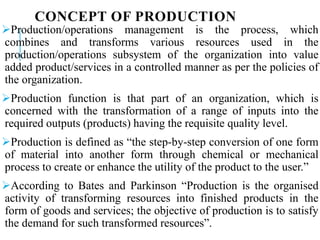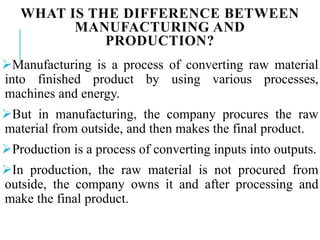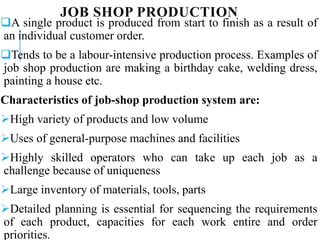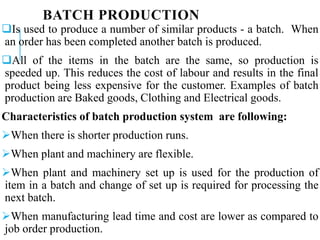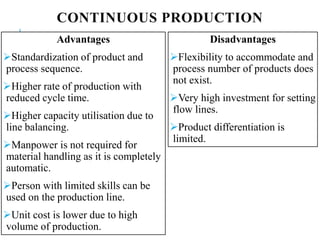This lecture discusses different production methods and their characteristics. It begins by defining production and describing the factors and types of production. It then outlines five main production methods - job shop production, batch production, mass production, continuous production, and just-in-time production - and discusses their key characteristics, advantages, and disadvantages. New technology is said to impact production through improved quality, new products, increased production levels, lower costs, and better communication; however, it can also result in redundancies, retraining costs, and capital costs for organizations.

